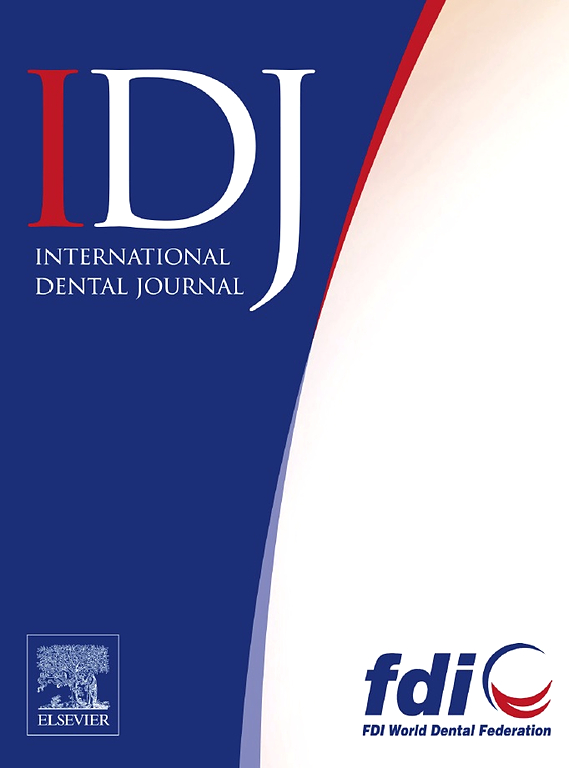2020-2023年德国COVID-19疫苗接种后口服不良事件国家药物警戒评估
IF 3.2
3区 医学
Q1 DENTISTRY, ORAL SURGERY & MEDICINE
引用次数: 0
摘要
目的COVID-19疫苗的药物警戒工作主要集中在严重不良事件(ae)上,而非严重但令人痛苦的不良事件(ae),如口服ae,仍未得到充分检查。本研究旨在分析德国国家药物警戒数据库中的口服AE报告模式。方法回顾性分析paul - ehrlich - institute (PEI)数据库中2020年12月至2023年12月的病例安全报告(icsr)。绝对报告率以每1000例口腔AE的病例数计算。次要分析包括:(1)与美国疫苗不良事件报告系统(VAERS)的交叉数据库比较;(2)使用混合方法结合频率论和贝叶斯条件进行不成比例分析,建立不成比例报告(sdr)的信号;(3)基于人口统计学和疫苗相关因素的亚组分析;(4)多变量回归对潜在混杂因素进行调整。结果味觉障碍,如老年、难语;其他口腔感觉不良反应,包括口腔感觉异常和口腔感觉减退;特异性粘膜不良事件,如口腔疱疹和口腔炎,是PEI数据集中最常报道的口腔不良事件。跨数据库分析不仅证实了味觉和其他感官ae的显著性,而且还强调了差异,VAERS报告的舌肿和唇肿率更高。歧化分析鉴定出21例口服ae为真正的sdr。女性易感性在几种口服ae中很明显,年龄分层分析显示,未成年人和老年人报告的发生率高于中年人。mRNA和病毒载体疫苗之间口服AE报告的差异缺乏一致的模式,加强剂量与某些口服AE报告的增加有关。在被动监测数据的限制下,本研究强调了进一步研究口服不良事件的必要性,该研究采用临床重大事件的自我控制病例系列设计。将口服不良反应纳入疫苗安全监测可以改善上市后监测,而经过验证的不良反应可能需要纳入产品信息以提高透明度。本文章由计算机程序翻译,如有差异,请以英文原文为准。
National Pharmacovigilance Assessment of Oral Adverse Events Following COVID-19 Vaccination in Germany (2020-2023)
Objectives
Pharmacovigilance efforts for COVID-19 vaccines have largely focused on severe adverse events (AEs), while nonserious, yet distressing, AEs, such as oral AEs, remain underexamined. This study aimed to analyse oral AE reporting patterns in the German national pharmacovigilance database.
Methods
A retrospective analysis of individual case safety reports (ICSRs) from the Paul-Ehrlich-Institut (PEI) database was conducted for December 2020 to December 2023. The absolute reporting ratio was calculated as cases per 1000 ICSRs for each oral AE. Secondary analyses included: (1) cross-database comparisons with the U.S. Vaccine Adverse Event Reporting System (VAERS); (2) disproportionality analysis using a hybrid approach combining frequentist and Bayesian conditions to establish signals of disproportionate reporting (SDRs); (3) subgroup analyses based on demographic and vaccine-related factors; and (4) multivariable regression to adjust for potential confounders.
Results
Gustatory AEs, such as ageusia and dysgeusia; other oral sensory AEs, including oral paraesthesia and oral hypoaesthesia; and specific mucosal AEs, such as oral herpes and aphthous stomatitis, were the most frequently reported oral AEs in the PEI dataset. Cross-database analysis not only confirmed the prominence of gustatory and other sensory AEs but also highlighted differences, with VAERS reporting higher rates of swollen tongue and lip swelling. Disproportionality analysis identified 21 oral AEs as true SDRs. Female susceptibility was evident in several oral AEs, and age-stratified analysis revealed higher reporting among minors and seniors compared to middle-aged adults. Differences in oral AE reporting between mRNA and viral vector vaccines lacked a consistent pattern, and booster doses were associated with increased reporting of select oral AEs.
Conclusions
Within the limitations of passive surveillance data, this study highlights the need for further research on oral AEs using self-controlled case-series designs for clinically significant events. Integrating oral AEs into vaccine safety monitoring could improve postmarketing surveillance, while validated AEs may warrant inclusion in product information for transparency.
求助全文
通过发布文献求助,成功后即可免费获取论文全文。
去求助
来源期刊

International dental journal
医学-牙科与口腔外科
CiteScore
4.80
自引率
6.10%
发文量
159
审稿时长
63 days
期刊介绍:
The International Dental Journal features peer-reviewed, scientific articles relevant to international oral health issues, as well as practical, informative articles aimed at clinicians.
 求助内容:
求助内容: 应助结果提醒方式:
应助结果提醒方式:


